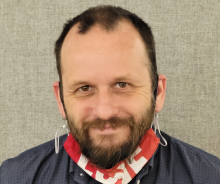Americans now owe a total of more than $1.7 trillion in student loan debt. And we know that borrowers with student loan debt are much more likely to postpone major life milestones and other important activities, such as marriage, having children, buying a home or taking a vacation to finally spend time with loved ones.
The AFT has been working to address the student debt crisis for nearly a decade. The union has counseled thousands of members at our student debt clinics, provided a free benefit to union members that will save them an estimated $500 million, taken student loan giants like Navient to court, and sued the Trump administration to protect borrowers.
With the federal emergency suspension of federal student loan payments and interest currently scheduled to end in January 2022, now is a critical time for AFT Massachusetts members with student loans to make sure they’re taking advantage of federal programs that can reduce their monthly payments and lead to the forgiveness of significant amounts of student debt.

Matt Amory, a Librarian for Information and Technology in Canton, Massachusetts and Treasurer of the Massachusetts Library Staff Association Local 4928 AFT, regularly advises other librarians, educators, social workers, and other public employees about their rights under income-driven repayment plans and the Public Service Loan Forgiveness program.
“Income-driven repayment plans are used by many student loan borrowers to reduce their regular monthly payments, often by hundreds or even thousands of dollars a year,” says Matt, who previously worked as a Technology Librarian in Wayland, Massachusetts. “Many people who work in public service are also eligible to have all or most of their debt forgiven through the Public Service Loan Forgiveness program, which began in 2007 as way of incentivizing people to work in government and nonprofit public service. It was a way to get people to go into public service careers with salaries that might not support the amount of debt needed to obtain the educational credentials that those careers required.”
To qualify for the program, you need to make 10 years of qualifying on-time payments (120 in total) toward your federal student debt. You must be working in the public service at least 30 hours a week (you can combine multiple part-time jobs to meet this requirement) beginning after October 1, 2007. After you make your 120th on-time payment, the U.S. Department of Education forgives your remaining federal student loan debt.
“The program was poorly communicated at the beginning and there were some awful implementation issues. Many people who believed they were making qualifying payments were not really,” says Matt. “It all came to head in 2017 when the first cohort of people eligible for forgiveness submitted applications and began climbing uphill, running into a buzzsaw of bureaucratic inefficiency by the Department of Education and loan servicers. Despite a huge number of applications, the number of initial approvals was low.”
But after lawsuits from advocates including AFT, the acceptance rate has improved significantly since 2017, and the Biden Administration is making additional improvements.
After saving $20 a month over the last decade through an income-driven repayment plan, Matt recently had $2,000 in graduate debt forgiven through the Public Service Loan Forgiveness program. He says he was lucky to have only one student loan, since his parents were able to pay for his undergraduate education.
“I’ve talked with many borrowers who have multiple loans – even as many as 10 or 12 – with a mix of different types of loans,” says Matt. “I recently worked with someone who started with $120,000 in loans from the mid-1980s. Interest on her loans had accumulated to more than her original principal amount, but because she qualified for loan forgiveness, after making $40,000 in payments, she had $360,000 in interest and principal forgiven.”
In his work with borrowers, Matt stresses the importance of understanding what your loan mix is and what is covered by Public Service Loan Forgiveness. The program offers forgiveness of direct federal student loans, but does not cover private loans, FEEL loans, or Perkins loans. However, FEEL and Perkins loans can be consolidated into direct loans, which can then be made eligible.
“Ten years still is a long time, so it’s important for borrowers to get on track and begin to accumulate qualifying payments,” he says. “There are specific criteria for each monthly payment: they can only be made to direct loans, must be made into an income-driven repayment plan, must be on-time, and you must be working full time for a qualifying employer.”
As a free member benefit, the AFT offers access to Summer — an online resource, started by student loan borrowers who wanted to help others avoid bad information and bad actors in the student loan market.
Using Summer’s online student loan management platform, AFT members who enroll in this free member benefit can:
- Enroll in income-driven repayment plans and manage annual income recertifications for these plans;
- Complete the Public Service Loan Forgiveness Employment Certification Form and manage the PSLF certification and application process;
- Find other options for loan forgiveness programs, including state- and occupation-based loan forgiveness, and get assistance in applying for them; and
- Talk through options with Summer’s borrower success team so they can understand how to best maximize their loan repayment and forgiveness options.
Register today for our October 19th Student Debt Clinic for AFT members!
